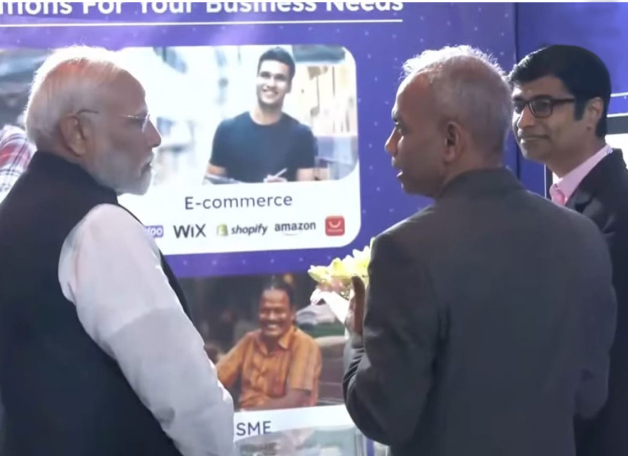While transferring money in India, we need the receiver’s bank account number as well as the IFSC code, whereas transferring money abroad needs you to have the receiver’s SWIFT code. Both the codes help you transfer funds securely from one bank account to another, but they’re not the same.
In this blog, let us understand the meaning and key difference of IFSC and SWIFT codes.
What is a SWIFT code?
The Society for Worldwide Interbank Financial Telecommunication, or SWIFT code, is an 8- to 11-character code used to identify a specific bank or financial institution in international transactions. It ensures secure and accurate transfers of money between banks across borders. Each code includes details about the bank, country, and branch location. SWIFT code is also known as Bank Identifier Code (BIC).
A breakdown of SWIFT code
The 8- to 11-character alphanumeric code is structured into a bank code, country code, location code, and an optional branch code.
- The bank code: The bank code comprises the first four characters of the SWIFT code that represent a particular bank or institution’s unique identifier. They could either be letters or numbers like ‘UBIN’ for Union Bank of India or ‘DUET’ for Duetsche Bank.
- The country code: These are the next two characters, representing the country where the institution is located. For example, “IN” for India, “US” for the United States, or “AU” for Australia.
- The location code: Next are two characters that specify the institution’s location within the country. These can be letters or numbers and indicate a particular city or region. For example, “DL” for Delhi, “LN” for London, or “TK” for Tokyo.
- The branch code: If the institution has multiple branches in one location, this code ensures the transaction reaches the correct branch. Since it’s optional, not all SWIFT codes include a branch code, resulting in an 8-character code instead of 11.
Examples of SWIFT code
Here are the two SWIFT code examples for
- BARCGB22: This code is for Barclays Bank Plc. ‘BARC’ indicates the bank code, ‘GB’ represents the country code, which is ‘UK’ in this case, and ‘22’ indicates the branch code.
- CITIUS33NYC: This code is for Citibank’s New York branch. In this code, CITI is the bank code, US is the country code for the USA, 33 signifies the location code, and NYC indicates the specific New York branch.
For more information on SWIFT international payments, Read Here
What is an IFSC code?
An IFSC (Indian Financial System Code) is an 11-character code used to uniquely identify a bank branch in India. It is primarily used for electronic fund transfers like NEFT, RTGS, and IMPS.
A breakdown of an IFSC code
Every bank branch is assigned a distinct IFSC code. Here’s what its components mean-
- Bank code: These are the first 4 characters that indicate the bank’s unique identifier, such as “SBI” for State Bank of India or “HDFC” for HDFC Bank.
- The fifth character: This is always a zero, reserved for future use, and holds no specific meaning.
- Branch code: The last 6 digits represent a particular branch of the bank. For instance, in the IFSC code SBIN0004521, “004521” specifies the branch code of the State Bank of India.
Examples of IFSC code
Here are two examples of IFSC codes with their breakdown for better understanding:
- SBIN0001256: This unique code refers to the State Bank of India’s Connaught Place branch in New Delhi. “SBIN” represents the bank code, the fifth character, 0, is reserved for future use, and “001256” denotes the branch code.
- PUNB0004501: This unique code refers to Punjab National Bank’s MG Road branch in Pune. “PUNB” is the bank code, the fifth character, 0, is reserved for future use, and “004501” indicates the branch code.
Usage of SWIFT code and IFSC code
A SWIFT code is essential for facilitating secure international money transfers. The sender’s bank uses this code to send a secure SWIFT message to your domestic bank. Once the message is received, your bank processes the payment and credits the amount to your account. To avoid delays, always provide the correct bank and branch details.
While an IFSC code is vital for domestic transactions within India using RTGS or NEFT systems. When transferring money to another bank account, you’ll need the beneficiary’s bank name, account number, and IFSC code.
Difference between SWIFT code and IFSC code
The basic difference between SWIFT and IFSC code are as follows:
| SWIFT Code | IFSC Code | |
| Full form | Society for Worldwide Interbank Financial Telecommunication | Indian Financial System Code |
| Code length | 8 or 11-digit alphanumeric code | 11-digit alphanumeric code |
| Function | Used to recognize banks and financial institutions globally | Essential for identifying bank branches in India |
| Transaction type | Required for international trade and transaction | Required for international trade and transactions |
| Managed by | It is managed by the Society for Worldwide Interbank Financial Telecommunication network | It is a part of the National Electronic Funds Transfer system and is managed by RBI |
Conclusion
Understanding the difference between SWIFT and IFSC codes is crucial for smooth domestic and international fund transfers. While SWIFT codes ensure secure global transactions, IFSC codes streamline electronic transfers within India. Both codes play a pivotal role in enhancing the efficiency and accuracy of banking operations.








